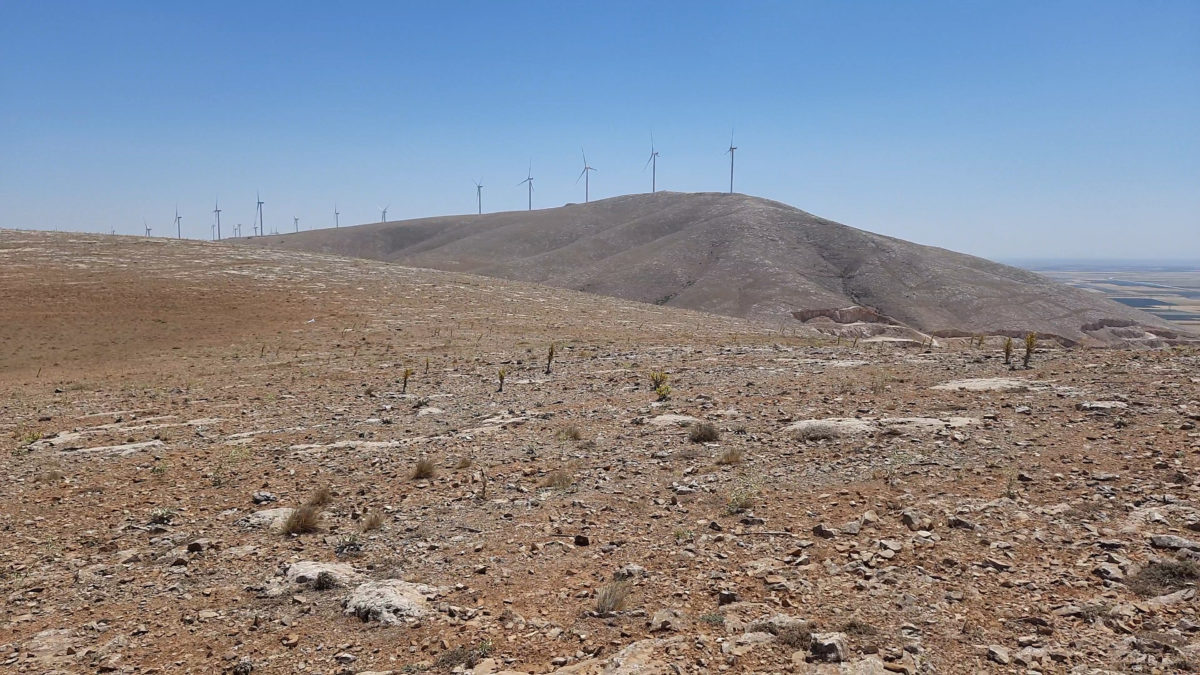Asunim, an Ankara-based renewable energy developer, has revealed plans to build two solar parks in Turkey, close to two existing wind farms owned by Sancak Energy.
The two solar projects will have a combined capacity of 42 MW and will be one of Turkey’s largest hybrid wind-solar projects to date.
“There is a regulation introduced by the Turkish government in June 2021 which allows combining any energy production source with a secondary source which can be wind or solar,” a company spokesperson told pv magazine. “The target here is to take advantage of the secondary source when there is no possibility to produce electricity from the primary source.”
The size limit for the secondary source is the AC limit of the primary source, according to the rules.
“For example, if you have a wind power plant of 100 MW, you can build a solar power plant of up to 100 MW,” the spokesperson said. “The solar facility will come into operation when the wind plant can not supply 100 MW AC at that moment so the solar park will fill the gap between the cap which is 100 MW and the actual production.”
Asunim will connect a 26 MW solar power plant with the 103.2 MW Bağlar wind farm, which went online in 2018, and a 16 MW solar array with the 52.8 MW Yahyalı Eolic power plant, which started generating electricity in 2015.
“Sancak Energy has shown us its full confidence in all processes of the project, from engineering to design, from procurement to installation, from construction and commissioning to long-term operation and maintenance,” the company said. “In this project type, which we call full EPC, we will manage the whole process. In this sense, we are breaking new ground for wind-solar hybrid projects in Turkey.”
The company said the the main challenge will be the application of its HPPC (Hybrid Power Plant Controller) software, which calculates how much solar should be produced. It also measures the reactive power and balance between solar and wind, as well as the harmonics.
“This is quite a complex job to do and Asunim already has the know-how from previous projects such as Juba project which is located in South Sudan and combines solar with fossil fuel gen-sets,” the spokesperson said.
Another challenge is provided by the irregular terrains where the wind power plants are located.
“Asunim design experts use 3D modeling programs to calculate mm by mm the shade effect and make a tailor-made project even at the most difficult terrains, so this challenge is also being met by technical and engineering capacity,” said the spokesperson.
The company claims that the two projects will achieve a significantly lower levelized cost of energy (LCOE).
“The main reduction factors on the solar project costs are achieved by connecting on an existing grid connection point and already leased land, improving the overall economy of the wind power profile by hybridization,” the spokesperson said. “The LCOE is reduced considerably due to adding more power and cheap source of power to an existing investment. When there is sun there is less wind and when there is less sun there is more wind so both technologies meet each other.”
This content is protected by copyright and may not be reused. If you want to cooperate with us and would like to reuse some of our content, please contact: editors@pv-magazine.com.




By submitting this form you agree to pv magazine using your data for the purposes of publishing your comment.
Your personal data will only be disclosed or otherwise transmitted to third parties for the purposes of spam filtering or if this is necessary for technical maintenance of the website. Any other transfer to third parties will not take place unless this is justified on the basis of applicable data protection regulations or if pv magazine is legally obliged to do so.
You may revoke this consent at any time with effect for the future, in which case your personal data will be deleted immediately. Otherwise, your data will be deleted if pv magazine has processed your request or the purpose of data storage is fulfilled.
Further information on data privacy can be found in our Data Protection Policy.